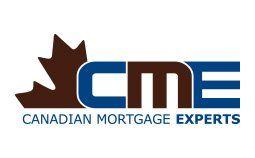Planning Ahead, A Guide to Mortgage Documentation
DLC Canadian Mortgage Experts • February 19, 2021

It doesn’t matter if you are looking to purchase your first home, your next home, or your twentieth home; typically the mortgage documentation required to secure financing will be the same. The earlier on in the process you can collect these documents, and provide them to your broker, the better.
So here we go, here is a list of the most common documents that will be required to secure mortgage financing.
INCOME VERIFICATION
Letter of Employment
– Written on company letterhead with a current date, your letter of employment should have your name, start date, position, and list whether you are full or part-time. It should also indicate your salary or the minimum guaranteed hours/week & hourly rate. The letter should be signed with the best contact information to allow for a verbal confirmation.
Pay Stub or Direct Deposit Form
– This will confirm your income, and should match what is written on the letter of employment.
T4 Slips
– Typically your last two years T4s should work.
Notice of Assessments
– Your previous two years of NOAs will help to establish your annual income. We will be looking at your line 150.
Financial Statements
– If you happen to be self-employed, having three years of financial statements or T1 Generals will be required.
DOWN PAYMENT VERIFICATION
Bank Statements
– 90 days of bank statements are required to show that you have had the downpayment in your possession or have accumulated the funds through payroll deposits. You will want to make sure that your name and account number appear on the statements.
Gift Letter
– If all or part of the downpayment is coming by way of a gift, you will have to provide a letter signed by you and the person gifting the money. The amount written on the gift letter will have to be deposited to your bank and substantiated on the bank statements.
RRSP Statements
– If part of your downpayment is coming by way of RRSP, you will be required to provide a 90-day history from your RRSP account. If you are using the Home Buyers Plan, there will be an additional form to complete.
Agreement of Purchase and Sale
– If your downpayment is coming by way of a sale of another property, the contract indicating the sale price, and your current mortgage statement will prove the equity to be used for the downpayment.
PROPERTY DETAILS
MLS Listing
– If you are purchasing a property through a Realtor, please have a copy of the MLS listing so we can verify the property details.
Purchase and Sales Agreement
– If you already have an accepted offer, please provide a copy of the purchase and sales agreement including all amendments and counteroffers.
Survey
– If you have one, send it along, if not, no worries.
Property Tax Assessment
– If you don’t have a copy of the most recent property tax assessment, one can usually be found on the local municipality/city website. The most recent assessment will be required.
OTHER DOCUMENTATION
Solicitor or Notary Information
– Please provide the name of your lawyer/notary, the firm, and their contact information.
Mortgage Statement
– If you are doing a mortgage refinance, please provide a copy of your current mortgage statement.
VOID Bank Cheque
– This is the account that your mortgage payments will be withdrawn from. A pre-authorized debit form works just as well.
As each mortgage is different, the documentation to satisfy each mortgage will vary somewhat. This list is a great place to start, but please know that more documentation may be required depending on your specific financial situation.
If you have any questions, please don’t hesitate to contact any of our Canadian Mortgage Experts anytime!
RECENT POSTS

Did you know there’s a program that allows you to use your RRSP to help come up with your downpayment to buy a home? It’s called the Home Buyer’s Plan (or HBP for short), and it’s made possible by the government of Canada. While the program is pretty straightforward, there are a few things you need to know. Your first home (with some exceptions) To qualify, you need to be buying your first home. However, when you look into the fine print, you find that technically, you must not have owned a home in the last four years or have lived in a house that your spouse owned in the previous four years. Another exception is for those with a disability or those helping someone with a disability. In this case, you can withdraw from an RRSP for a home purchase at any time. You have to pay back the RRSP You have 15 years to pay back the RRSP, and you start the second year after the withdrawal. While you won’t pay any tax on this particular withdrawal, it does come with some conditions. You’ll have to pay back the total amount you withdrew over 15 years. The CRA will send you an HBP Statement of Account every year to advise how much you owe the RRSP that year. Your repayments will not count as contributions as you’ve already received the tax break from those funds. Access to funds The funds you withdraw from the RRSP must have been there for at least 90 days. You can still technically withdraw the money from your RRSP and use it for your down-payment, but it won’t be tax-deductible and won’t be part of the HBP. You can access up to $35,000 individually or $70,00 per couple through the HBP. Please connect anytime if you’d like to know more about the HBP and how it could work for you as you plan your downpayment. It would be a pleasure to work with you.

If you’re new to the home buying process, it’s easy to get confused by some of the terms used. The purpose of this article is to clear up any confusion between the deposit and downpayment. What is a deposit? The deposit is the money included with a purchase contract as a sign of good faith when you offer to purchase a property. It’s the “consideration” that helps make up the contract and binds you to the agreement. Typically, you include a certified cheque or a bank draft that your real estate brokerage holds while negotiations are finalized when you offer to purchase a property. If your offer is accepted, your deposit is held in your Realtor’s trust account. If your offer is accepted and you commit to buying the property, your deposit is transferred to the lawyer’s trust account and included in your downpayment. If you aren’t able to reach an agreement, the deposit is refunded to you. However, if you commit to buying the property and don’t complete the transaction, your deposit could be forfeit to the seller. Your deposit goes ahead of the downpayment but makes up part of the downpayment. The amount you put forward as a deposit when negotiating the terms of a purchase contract is arbitrary, meaning there is no predefined or standard amount. Instead, it’s best to discuss this with your real estate professional as your deposit can be a negotiating factor in and of itself. A larger deposit may give you a better chance of having your offer accepted in a competitive situation. It also puts you on the hook for more if something changes down the line and you cannot complete the purchase. What is a downpayment? Your downpayment refers to the initial payment you make when buying a property through mortgage financing. In Canada, the minimum downpayment amount is 5%, as lenders can only lend up to 95% of the property’s value. Securing mortgage financing with anything less than 20% down is only made possible through mortgage default insurance. You can source your downpayment from your resources, the sale of a property, an RRSP, a gift from a family member, or borrowed funds. Example scenario Let’s say that you are looking to purchase a property worth $400k. You’re planning on making a downpayment of 10% or $40k. When you make the initial offer to buy the property, you put forward $10k as a deposit your real estate brokerage holds in their trust account. If everything checks out with the home inspection and you’re satisfied with financing, you can remove all conditions. Your $10k deposit is transferred to the lawyer’s trust account, where will add the remaining $30k for the downpayment. With your $40k downpayment made, once you sign the mortgage documents and cover the legal and closing costs, the lender will forward the remaining 90% in the form of a mortgage registered to your title, and you have officially purchased the property! If you have any questions about the difference between the deposit and the downpayment or any other mortgage terms, please connect anytime. It would be a pleasure to work with you.

